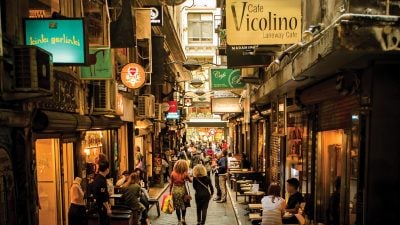Home / Australia & South Pacific / Fresh Flavours of the Islands …
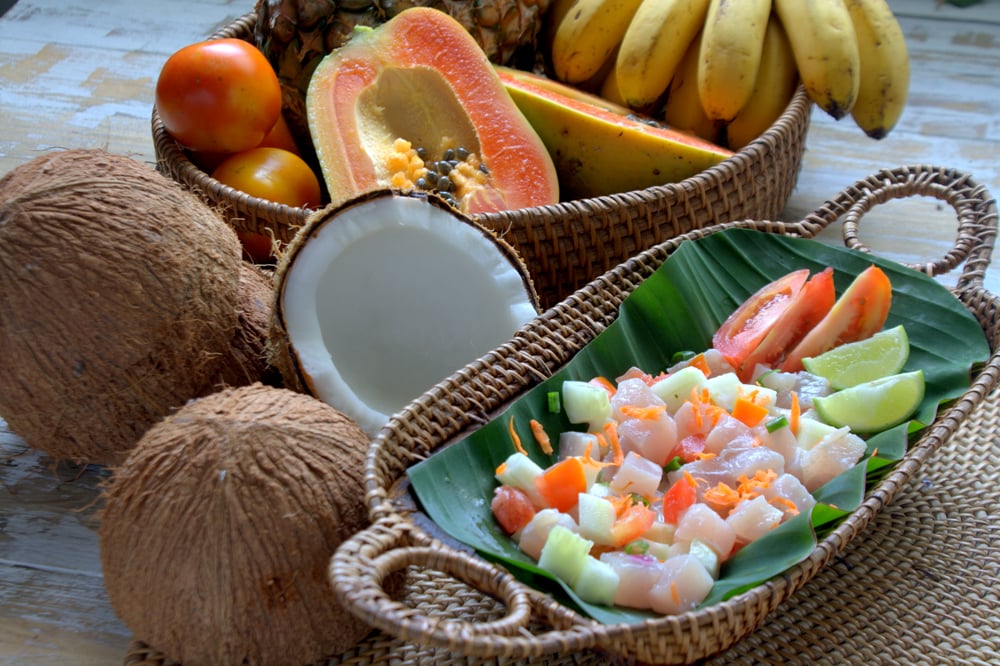
Fresh Flavours of the Islands of Tahiti
The beaches, oceans, and resorts are always going to be the prime reasons to be excited about a trip to the Islands of Tahiti. But the food definitely deserves some mention. When you’re spending your days relaxing on beaches and swimming and snorkelling through the waters, you’ll work up an appetite and want to feast on some delicious food at day’s end. A nice meal is a great reward of any vacation, but in Tahiti, it’s especially so, as the food is incredibly fresh and a lot different than what you’ll find elsewhere in the world. So to get you prepped for a future trip to the Islands of Tahiti, we’re going to break down the basics about the islands’ culinary flavours.
An Intro to Tahitian Cuisine
To be clear, when you head to French Polynesia, you’ll eat most of your meals in the resorts. But that doesn’t preclude you from being curious about the food culture of these South Pacific islands. Furthermore, you’ll have a lot of chances to leave the resort and try foods in local restaurants, especially if you’re staying on the island of Tahiti itself. So it’s worth learning about what kind of food you can get outside of the al fresco sashimi restaurants and seaside buffets available at popular resorts.
French Polynesian food has a lot of influences, not least of which is French and Chinese, but at its heart, it’s a cuisine dictated by available food sources on the land and in the sea. Thus, it’s a culinary culture built off of seafood, tropical fruits, and ancient ways of cooking and preparing dishes. A tamara’a, or banquet, is the focal point of Polynesian cooking and eating, as a meal is meant as a celebration of life’s bounty. But not every night can accommodate a tamara’a, so an ordinary restaurant will have to accommodate locals and travellers most nights.
In the Islands of Tahiti, restaurants are mostly located in the larger towns and along the popular beaches and coastlines. Many are within walking distance of resorts or easily accessible by taxi or shuttle. Prices are a bit higher than you’d expect, but French Polynesia is a long way from the rest of the world and it’s expensive to import food, thus, the prices reflect that fact. Generally, restaurants have dollar signs in their windows to signal their price level. One dollar sign means meals are usually less than 1,200 CPF, which is around $11 US. Two dollar signs means between 1,200 and 2,400 CPF, and three dollar signs means over 2,400 CPF. Ask people at your resort about good restaurants nearby, chat with fellow travellers about hidden finds, and follow your nose; if the food grilling out back of a seaside restaurant smells good, odds are it is good.
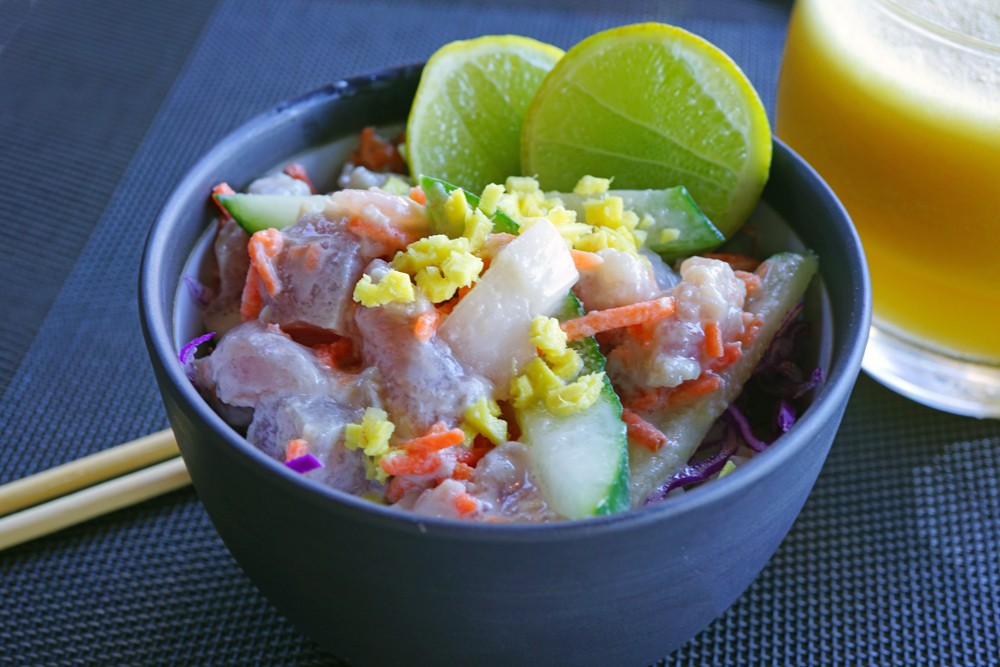
Traditional Tahitian Cuisine
In French Polynesia, everything comes down to seafood. So if you don’t like seafood, maybe stick to the resort buffet. However, how could you turn down such delicious fish when it’s so fresh and in such abundance? The classic Tahitian dish is poisson cru, which is similar to ceviche if you’ve ever been to South America. It features fresh raw fish, most often tuna or bonito, marinated in coconut milk and lemon juice, and tossed with sliced onions and tomatoes. The quality of poisson cru depends on the quality of the fish, and luckily, French Polynesia isn’t lacking for fresh fish.
Another key element of traditional Tahitian cooking is the ahima’a, a traditional underground oven, which involves food being cooked inside a metal box dug into the ground with hot stones placed inside along with the food. The main ingredients cooked in an ahima’a depend on what’s available, so you can have suckling pig, fish, crab, or shrimp as your main protein, and then other key ingredients like taro, sweet potato, and breadfruit added in as well. The whole mix is then covered with banana leaves and left to cook for at least four hours, after which, everything will have baked nicely.
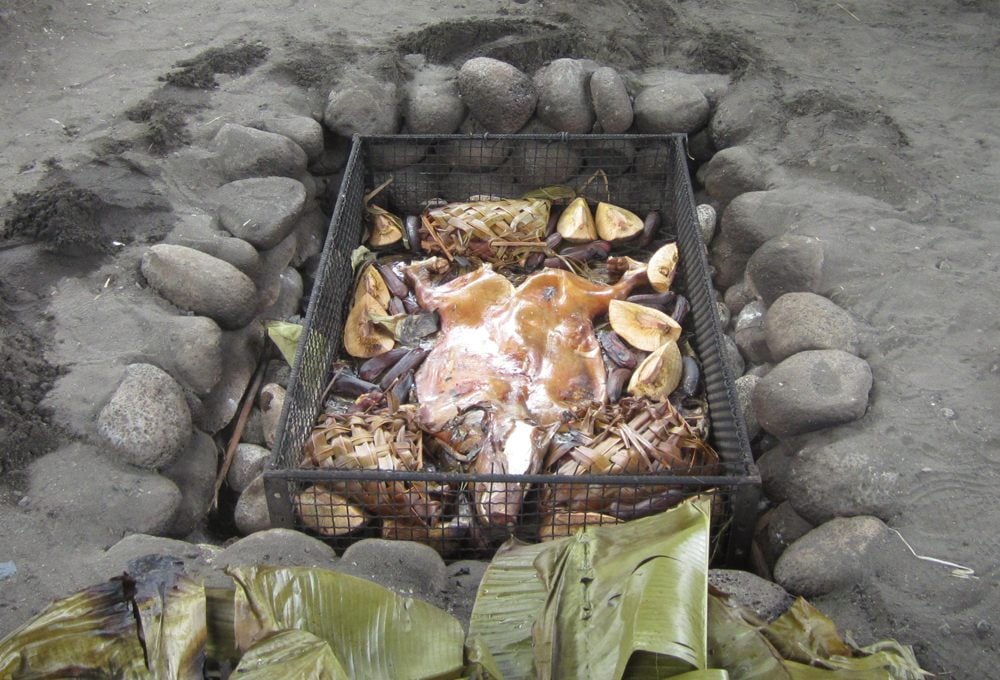
If you really want to challenge your palette, try the fafaru, which is a fish dish where chunks of tuna or parrotfish are marinated in seawater that’s been flavoured by crushed shrimp heads. It may be a little savoury and smell odd to tourists, but it gives you a sense of how people ate in the islands centuries ago. And who knows, you may even love it, as it’s very much a “love it or hate it” dish.
You’ll also find that grilling is popular in the Islands of Tahiti, with everything from shrimp to imported chickens to all manner of fish, from tuna to swordfish, grilled right on the beaches and served up hot and crispy. Often grilled fish is served with a Taha’a vanilla sauce, giving it a sweet flavour to add to the savouriness of the fish. You’ll also find a lot of seafood like giant clams, sea urchins, mantis shrimp, and coconut crabs available to eat in the islands.
For drinks, everyone favours the local beer Hinano, but you can also find popular international brands like Heineken at a markup. Most coffee is instant coffee, unless you order espresso near the resorts. For refreshing drinks, most people stick to coconut water, as it’s healthy, cheap, and thirst quenching.
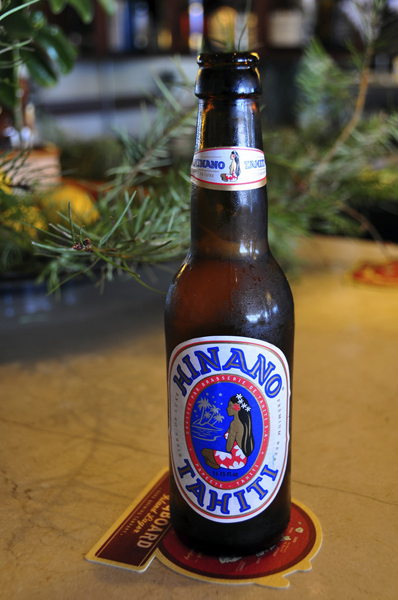
International Influences
In addition to traditional dishes like poisson cru or ahima’a bakes, you’ll find a lot of international flavours in the Islands of Tahiti. Asian and French influences are predominant, as the Chinese were the first foreigners to get in contact with the Polynesians, while the French colonized the islands in the 19th century and still technically control the islands to this day. So at fancier restaurants or in the resorts, you’ll find a lot of French and Chinese flavours worked into dishes utilizing local ingredients. For Chinese flavours, Hong Kong-style cuisine is particularly prevalent. Chow mein is a very popular dish in French Polynesia, as is roasted duck and mapo tofu.
While fish is most popular in French Polynesia, you can also find chicken, pork, and even beef and lamb dishes. Fair warning though, most of the chicken in French Polynesia is frozen and imported from the United States, so if you want high quality meat, opt for something else. For instance, beef and lamb comes from New Zealand, meaning it’s among the best quality in the world. A grilled lamb skewer will be as good as you’ll find anywhere else.
It’s smart to venture outside of your resort and see what’s available. You’ll find some American-style joints mixed in with places serving French and Chinese fusion dishes, but don’t expect much more than hamburgers. The best restaurants are on Tahiti, but you’ll also find good places on Moorea and Raiatea.
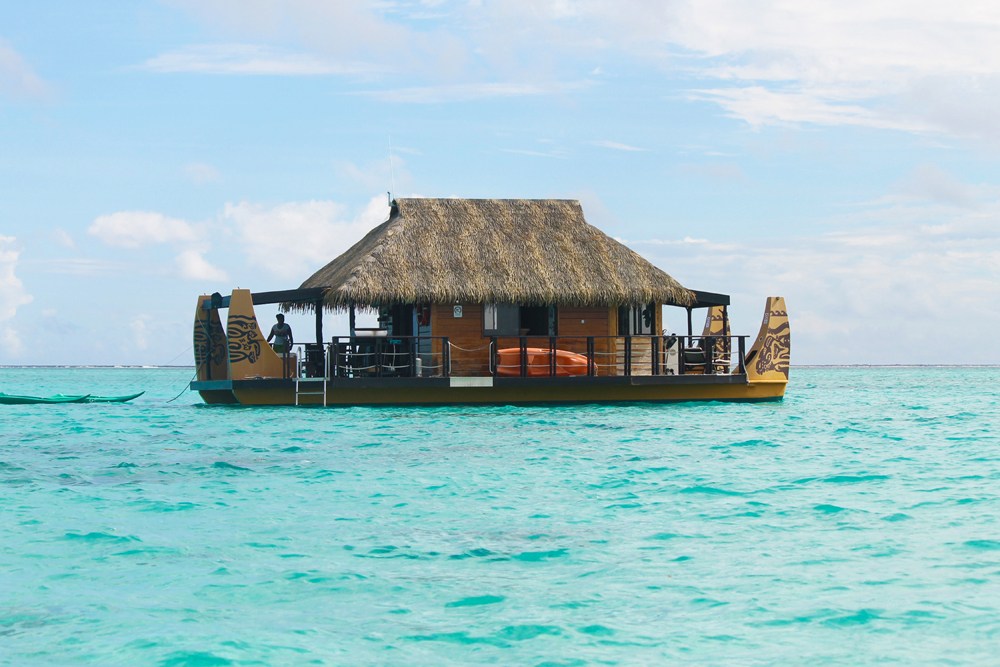
Les Roulottes
It’d be foolish to talk about French Polynesian food without mentioning les roulottes, (meaning caravans in French), the food stalls that line the shoreline in Papeete. Literally caravans in French, les roulottes are food vans which are super popular with tourists and locals. Every sundown, people flock to les roulottes to buy everything from thin-crust pizzas to Nutella waffles to deep-fried fish and chicken. There are dozens of stalls and all of them accept cash only, but if you are staying on Tahiti, you should have at least one meal here. Most of les roulottes are found near Nanuu Bay in Papeete. Many stay open late into the night and offer snacks long after other places close, so take advantage of them.

It’ll always be the beautiful natural environments that draw people to the Islands of Tahiti, but you’ve got a lot to look forward to when it comes to food as well.
Related Article:
Drink Your Way Through the Islands of Tahiti
Get more travel inspiration by email.
Subscribe
0 Comments

Get the latest travel trends & hear about the best deals on vacations around the world.
If you’re a Globetrotter, these are the newsletters for you!
